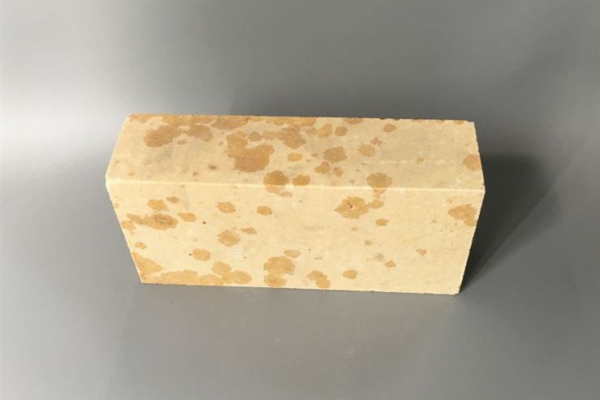Refractory bricks are an essential component in many industrial processes that involve high temperatures. These specialized bricks are designed to withstand extreme heat and provide insulation and protection to the equipment and structures in industries such as steel, semen, kaca, dan petrokimia.


1. Understanding Refractory Bricks
Batu bata tahan api, also known as fire bricks, are made from refractory materials that have excellent heat resistance properties. These materials are capable of withstanding temperatures above 1,000 degrees Celsius without deforming or losing their strength. Refractory bricks are typically composed of alumina, silika, magnesia, or a combination of these materials. They come in various shapes and sizes to accommodate different industrial applications.
2. Types of Refractory Bricks
There are several types of refractory bricks available, each designed for specific purposes and environments. Some common types include:
2.1. Fire Clay Bricks
Fire clay bricks are made from a mixture of clay and other materials such as shale or kaolin. They are suitable for low-temperature applications and are commonly used in fireplaces, cerobong, and residential ovens.
2.2. Batu Bata Alumina Tinggi
High-alumina bricks are made from high-purity alumina and have excellent resistance to corrosion and thermal shock. They are widely used in industries that require high-temperature applications such as steelmaking and glass manufacturing.
2.3. Batu Bata Isolasi
Insulating bricks have low thermal conductivity, making them ideal for applications where heat insulation is essential. They are commonly used in kilns, tungku, and boilers to reduce heat loss and improve energy efficiency.
2.4. Batu Bata Silika
Silica bricks are made from silica, a heat-resistant material. They are suitable for applications with high thermal stress and are commonly used in glass melting furnaces and coke ovens.


3. Common Refractory Brick Installation Practices
Proper installation of refractory bricks is crucial for their effectiveness and longevity. Here are some common practices to follow during installation:
3.1. Surface Preparation
Before installing refractory bricks, the surface should be thoroughly cleaned and prepared. Any dust, debris, or loose material should be removed to ensure a clean and stable surface for brick placement.
3.2. Brick Bonding
Proper bonding of refractory bricks is essential to create a solid and durable structure. Different bonding techniques such as mortaring, ramming, or gunning may be used depending on the application and type of refractory bricks.
3.3. Thermal Expansion Joints
To accommodate thermal expansion and prevent cracking, it is important to incorporate thermal expansion joints in the brickwork. These joints allow the bricks to expand and contract without causing damage to the structure.
3.4. Curing and Drying
After installation, the refractory bricks need to be properly cured and dried to achieve their maximum strength. This process involves gradually increasing the temperature to remove any remaining moisture and stabilize the refractory material.
3.5. Quality Control
Regular quality control checks should be conducted during and after the installation process. This ensures that the bricks are correctly installed and any potential issues are identified and addressed promptly.
4. Common Refractory Brick Maintenance Practices
Regular maintenance is essential to prolong the lifespan of refractory bricks and ensure optimal performance. Here are some common maintenance practices:
4.1. Visual Inspections
Regular visual inspections should be carried out to identify any signs of damage, such as cracks, erosion, or loose bricks. These inspections help in detecting issues early on and taking necessary measures to prevent further damage.
4.2. Cleaning and Removal of Deposits
Over time, refractory bricks can accumulate deposits, such as slag or ash, which can impact their performance. Regular cleaning of the bricks is necessary to remove these deposits and maintain their efficiency.
4.3. Repairing Cracks and Damage
If any cracks or damage are detected during inspections, immediate repair is necessary. Cracked or damaged bricks should be replaced, and the affected area should be repaired using suitable refractory materials.
4.4. Refractory Coatings
Applying refractory coatings can enhance the durability and resistance of the bricks to chemical attacks and erosion. These coatings act as a protective layer, extending the lifespan of the refractory bricks.
4.5. Temperature Monitoring
Monitoring the temperature in the vicinity of refractory bricks is crucial to prevent overheating, which can lead to premature failure. Temperature monitoring devices should be installed to ensure that the bricks are not exposed to temperatures beyond their capability.
4.6. Proper Handling and Storage
During maintenance activities or replacement of refractory bricks, it is important to handle them with care. Improper handling can cause damage or breakage, leading to compromised performance. Selain itu, proper storage conditions should be maintained to prevent moisture absorption or contamination.
Kesimpulan
Common refractory brick installation and maintenance practices are essential for ensuring the longevity and optimal performance of these specialized bricks in high-temperature environments.
By following proper installation techniques and conducting regular maintenance, industries can maximize the efficiency of their equipment and structures while reducing the risk of downtime and costly repairs.
Remember to choose the right type of refractory bricks, perform thorough inspections, and address any issues promptly to extend the lifespan of the bricks and maintain operational efficiency.
